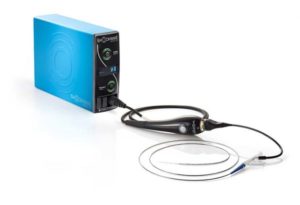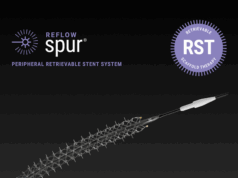
Shockwave Medical has announced the start of the Disrupt BTK II postmarket study to assess the safety, effectiveness and optimal clinical use of the Shockwave peripheral intravascular lithotripsy (IVL) system for the treatment of calcified peripheral lesions below the knee (BTK), including some of the most challenging patients with chronic limb-threatening ischaemia (CLTI).
Disrupt BTK II is a postmarket, prospective, multicentre, single-arm study led by Ehrin Armstrong, medical director and interventional cardiologist, Adventist Heart & Vascular Institute (St Helena, USA), and Venita Chandra, vascular surgeon and clinical associate professor, Division of Vascular Surgery, Stanford Health Care (Stanford, USA). The study is expected to enrol 250 patients across 40 sites globally that will be followed for two years to assess the long-term durability of IVL in this difficult-to-treat patient population. The first Disrupt BTK II patient was enrolled at Midwest Cardiovascular Research Foundation (Davenport, USA) by Nicolas Shammas.
“Patients with severely calcified, diffuse below-the-knee disease, and especially those with CLTI, are often in severe pain with limited treatment options to achieve adequate arterial revascularisation. The unmet clinical need for this population is extremely high,” said Armstrong. “Disrupt BTK II will further evaluate how IVL may be optimally used to treat patients who have historically been excluded from most endovascular treatment trials.”
The primary effectiveness endpoint of Disrupt BTK II is procedural success, defined as ≤50% residual stenosis for all treated target lesions without serious angiographic complications (flow-limiting dissection, perforation, distal embolisation, or acute vessel closure), as assessed by an independent angiographic core lab. The study will assess the absence of major adverse limb events (MALE) within 30 days of the index procedure as a primary safety endpoint.
“More and more patients with CLTI also present with end-stage renal disease, advanced diabetes, or other comorbidities that impact their overall health and our ability to effectively treat their CLTI,” said Chandra. “We already know that IVL can reduce significant dissection as well as reduce the need for provisional stenting over conventional PTA [percutaneous transluminal angioplasty] in peripheral vessel beds, but what makes Disrupt BTK II even more exciting is that we are now isolating the treatment effect to get a clearer picture about what role IVL can offer as a definitive therapy for these very complex patients.”













